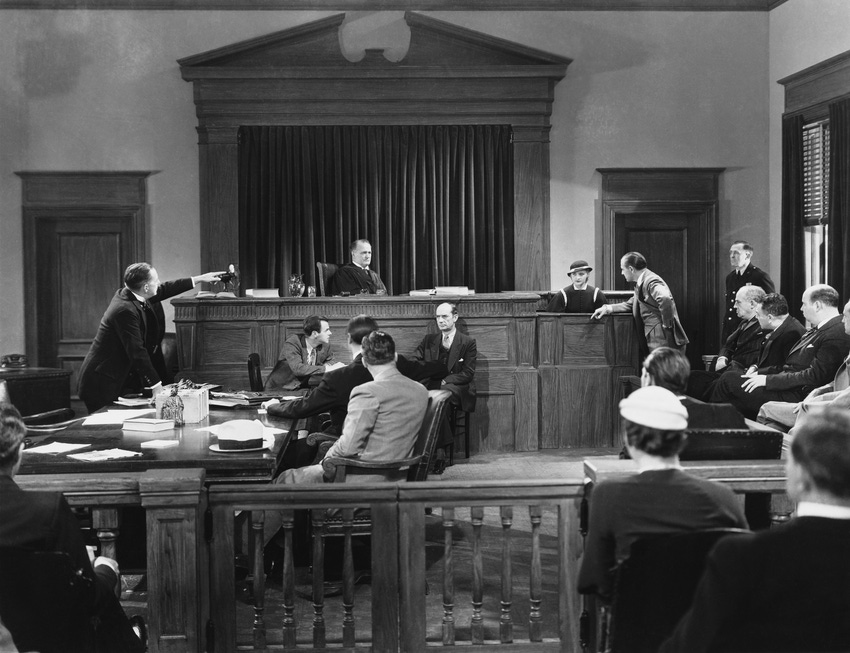Net neutrality’s last life kept intact by Supreme Court
The Supreme Court has rejected attempts by the telco industry and the Trump administration to completely erase net neutrality rules from the lawbooks.
November 6, 2018

The Supreme Court has rejected attempts by the telco industry and the Trump administration to completely erase net neutrality rules from the lawbooks.
With petitions filed by AT&T and various industry lobby groups to quash a ruling made in favour of the Obama-era net neutrality rules in 2015, a ruling which is the only glimmer of hope for net neutrality’s survival, the Supreme Court offered a lifeline. It seems rolling back net neutrality is not enough for FCC Chairman Ajit Pai, as the Republican is seemingly attempting to destroy any future attempts to reinstate the rules, which the 2015 District Court ruling holds.
While Pai and his cronies have effected taken the US back to the light-touch regulatory playing field of 2015, moves made by his predecessor Tom Wheeler to reclassify the internet service providers still stood. In passing net neutrality rules, Wheeler classified ISPs in the same league as telephony providers, and therefore under stricter regulation. This decision was upheld by the US Court of Appeals for the District of Columbia Circuit, which AT&T, NCTA, CTIA, USTelecom, and the American Cable Association were challenging here.
The presence of this case might not have any impact on the telcos today, though it would offer any future administration, who might be pro-net neutrality, a foundation to rebuilt the walls of regulation. Pai doesn’t just want to remove the rules, he wants to drive the concept of net neutrality to extinction with no prospect of return.
This ruling however, is a win for the net neutrality camp, a rare one which just might add enough momentum to sustain life until a change in administration.
“This is good news for net neutrality supporters,” said John Bergmayer, Senior Counsel at Public Knowledge, a pro-net neutrality lobby group which is also suing the FCC for the initial roll back. “The DC Circuit’s previous decision upholding both the FCC’s classification of broadband as a telecommunications service, and its rules prohibiting broadband providers from blocking or degrading internet content, remains in place.
“While the current FCC has repealed those rules – a decision Public Knowledge is currently challenging in court – this means that the previous decision is binding on the current FCC, and on the DC Circuit panel that hears the current challenge. Much of the current FCC’s argument depends on ignoring or contradicting the D.C. Circuit’s earlier findings, but now that these are firmly established as binding law, the Pai FCC’s case is on even weaker ground than before.”
The NCTA, the Internet and Television Association, is unsurprisingly miffed with the decision.
“It is not surprising that the Supreme Court declined to hear this case dealing with the Wheeler FCC’s 2015 Order,” the NCTA said in a statement. “Once the current FCC repealed the 2015 Order, almost all parties – including NCTA – agreed that the case was moot. Today’s decision is not an indication of the Court’s views on the merits but simply reflects the fact that there was nothing left for the Court to rule on.”
It seems the absence of two Republican Supreme Court judges was the deciding factor here. The newly, and controversially, appointed Justice Brett Kavanaugh removed himself from the process, having participated in the judgement of the original appeal, while Chief Justice John Roberts supposedly owns shares in AT&T.
For the pro-net neutrality supporters this was a critical win in the courts. Firstly, for the rules to be reinstated the classification as telcos as common providers is a must, though momentum was gathering for Pai and his cronies in the blood-thirsty mission.
This is not to say net neutrality camp is not without its support, but with President Trump adding his weight to the hunting trip, the pressure was starting to build. Another factor is precedent. The legal community use decisions made elsewhere in the industry for guidance, and there were a lot of decisions going against net neutrality over the last few months. Momentum was building and the issue is becoming increasingly politicised. The light was fading, though the 2015 decision being upheld is a win.
Whether this decision acts as a catalyst for net neutrality momentum and support remains to be seen, though California’s challenge to the FCC is still hanging in the balance. After signing its own net neutrality rules in State Law, despite contradictions with federal agency positions, California has decided to put the implementation of the rules on-hold until it has resolved its own lawsuit with the Department of Justice which argues the state has acted unconstitutionally.
Elsewhere around the US, various states are lining up their own, local, net neutrality rules. Washington State has already signed its own into law, while states such as Hawaii and New York are seemingly waiting for various rulings. While the approach might be broadly similar, there will be differences in each state. This patch-work of regulatory environment is something the US government is very keen to avoid, and it would turn into an operational disaster for the telcos.
In a separate lawsuit, 23 Attorney Generals throughout the US, including Maine, North Carolina, Rhode Island and Delaware, led by New York Attorney General Eric Schneiderman, are challenging the original 3-2 decision made by the FCC to roll back the net neutrality rules. The criss-cross of lawsuits, each of which relies somewhat on another decision and precedent, is starting to become complicated.
The dominos are certainly lining up across the US, each decision may send the entire stack into freefall. The weight of each ruling is getting heavier and heavier.
About the Author(s)
You May Also Like











_1.jpg?width=300&auto=webp&quality=80&disable=upscale)


.png?width=800&auto=webp&quality=80&disable=upscale)